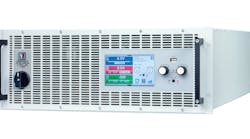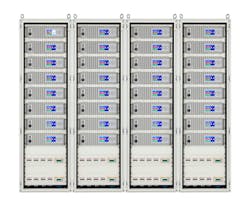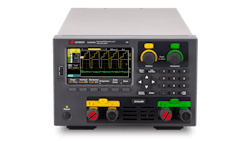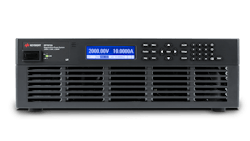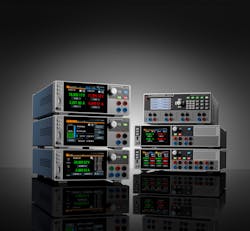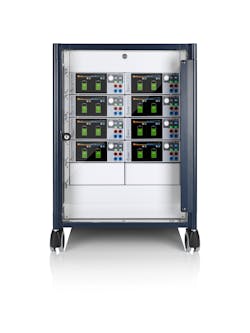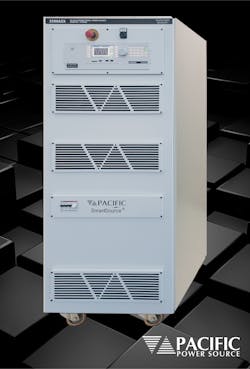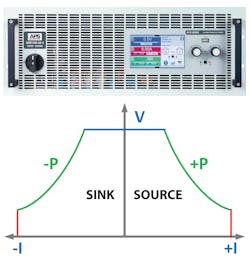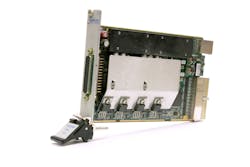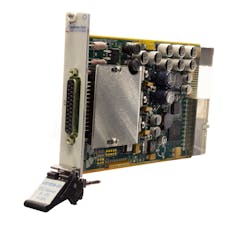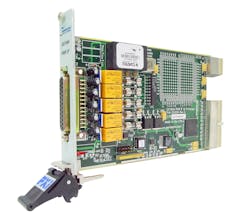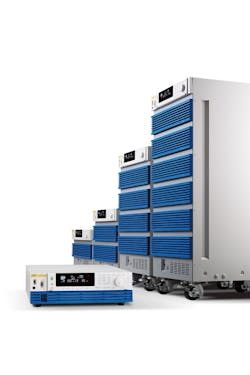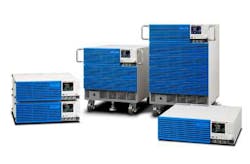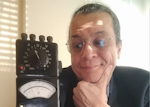Download this article in PDF format.
Power is a fundamental aspect of all electronics, as nothing happens until the current flows. A product’s power electronics have a significant impact on all operational elements of the system driven. How efficient, quiet, safe, and reliable a product’s power storage and/or supply methodology is impacts performance aspects, from RF range to battery lifetime.
In order to properly evaluate, certify, and optimize the power infrastructure of devices, programmable power supplies and loads are vital tools in testing products, from low-power IoT devices and consumer appliances, to electric vehicles and smart-grid infrastructures. Here are some of the latest solutions in the space.
Efficiency and flexibility
When we reached out to Elektro-Automatik’s (https://elektroautomatik.com/en/) Global Marketing Manager, Craig Frahm, he touted the efficiency, power density, and flexibility of their latest programmable power supply and load products. Among the examples given was their Series PSI 10000, which can supply up to 2,000 V at a power output of up to 30 kW. The 19-in., 4U rack-mount supplies are more than 95% efficient, enabling a high-power density. The supplies are autoranging, allowing them to supply a wider range of currents and voltages than legacy power supplies.
Their Series PSB 10000 bidirectional power supply combines the functionality of a programmable power supply and an electronic load in a single unit (Figure 1). Like the Series PSI 10000, it can supply up to up to 2000 V at a power output of up to 30 kW in a single 4U enclosure with an autoranging output. The Series PSB 10000 can sink up to 30 kW while recovering up to 95.5% of the input power, returning that power to the grid. This functionality helps users to lower energy costs and eliminates the need for expensive cooling systems. The Series ELR 10000 electronic loads also provide this same functionality.
Key features of the PSI 10000, PSB 10000, and ELR 10000 Series include a TFT touch screen, so users can set up and monitor power supply and electronic load functions, and an integrated function/arbitrary waveform generator. This allows users to apply standard functions such as sine, triangle, and square waves, or even arbitrary values, to a power supply output.
The family’s Anybus slot is a feature that allows a user to easily configure a unit’s digital interface with plug-ins. Modules compatible with this slot offer RS-232, CAN, CANopen, ModBus, TCP, Profibus, Profinet, and EtherCAT interfaces. Additional features include a galvanically-isolated analog interface and built-in test functions such as battery test, fuel cell test, and photovoltaic array simulation, conforming to both EN50530 and Sandia standards.
There is also a water-cooling option.
Key challenges
Craig pointed out that battery testing and electric vehicle testing is becoming more and more important. Not only is there a push to electrify consumer vehicles, but commercial and industrial machinery as well. This is leading to the need for power supplies capable of supplying higher voltages and higher power. To meet these needs, Elektro-Automatik is working on more efficient power supplies, increasing power density. For example, the company can supply a system capable of delivering 240 kW in a single rack and up to 2 MW in a multirack system (Figure 2).
Other challenges include electrical costs and environmental concerns. For those concerned about these issues, the company offers high-efficiency power supplies and electronic loads that recover up to 95.5% of the input power and return that power to the grid. The automotive and heavy machinery industries are going with higher voltages and higher power. This includes EVs, buses, and construction and farm equipment.
Leading trends
One major trend is the requirement for faster transient response. This faster response is needed for simulating different drive conditions and for fuel cell testing. A fuel cell perturbation test, for example, requires that an electronic load switch from drawing high current to low current in microseconds. In battery testing, Craig said Elektro-Automatik sees a trend toward bidirectional capability, the ability to both source and sink power, which gives users the flexibility they need to test batteries with a single unit.
Craig said that E-mobility, including battery testing, automotive, and heavy machinery is perhaps Elektro-Automatik’s biggest market currently, which their product line addresses. For example, their Series PSB 10000 can both charge and discharge batteries with a built-in battery test functionality. There is also an optional software package that allows the simulation of standard lead-acid (AGM) and lithium-ion batteries, in series or parallel. Another application area that is important is the semiconductor industry, where the company’s power supplies are used mostly for process control.
He also pointed out that their 10000 Series products all use silicon carbide (SiC) power semiconductors for faster switching speeds and higher efficiencies than traditional MOSFET technology. He also feels that there is going to be more demand for bidirectional products in the future, such as their Series PSB 10000 power supplies. As far as output voltages go, 2,000 V is good for now, but in the future, the industry will migrate toward higher output voltages.
Current-doubling tech
When we got in touch with Casey Kuzara, Senior Engineering Manager at AMETEK (https://www.ametek.com/), he brought up the company’s latest solution, the Asterion Series. The California Instruments Asterion AC Series provides programmable AC, DC & AC+DC power, in models delivering from 500 VA to 36,000 VA, with 200/400-V AC outputs and 250/500-V DC outputs in single- and three-phase configurations. All Asterion Series maximize space with leading power density in 1U, 2U, 4U and 14U high form-factors.
All Asterion sources employ AMETEK’s latest current-enhancing technology, which enables output current to increase linearly up to two times the full voltage current, as the voltage decreases from range maximum to one-half of range voltage. iX2 technology results in a source that delivers full power over the widest voltage ranges, eliminating the need to buy overpowered sources just to reach low line current requirements.
The Asterion AC Series is DSP controlled, and can be operated from the intuitive front-panel color touchscreen or available Ethernet LXI, USB and RS232 standard control interfaces, as well as an optional GPIB control interface. Their Virtual Panels GUI allows remote control of the Asterion AC power source, as well as programming communication and monitoring for the Asterion ATE model without a front-panel display. The Asterion AC Series also features multilanguage capability for global operation, auto paralleling for higher power, arbitrary and harmonic waveform generation, sequencing and measurement analysis, as well as complete IEC and avionics standards test suites.
The newest addition to the Asterion platform of power testing solutions, the Sorensen Asterion DC Series, is available in both fixed- and autoranging versions. The fixed-range supplies are economical, traditional rectangular wave output power supplies with all the enhanced operation advantages standard with the Asterion platform. The autoranging supplies feature expanded current and voltage range at the full output power level, enabling the ability to satisfy a wider testing need without needing additional models.
The fixed-range models come in 40- to 400-V models with output current ratings from 4.3 A to 125 A. The 1,700 kW, 3,400 kW and 5 kW models 1U high. The company also has 10 kW models in 40 V to 400 V with output current ratings from 25 A to 250 A in a 2U high package. AMETEK also offers 15 auto ranging models within this series, featuring expanded current and voltage range at the full output power level, to satisfy a wider testing need without requiring the purchase of additional models.
The Asterion DC Series, just like the Asterion AC Series, has several operating advantages such as easy auto-paralleling, complete remote programming and control via the Virtual Panels GUI, and intuitive front panel color touch screen operation. Additionally, the instrument can be controlled via standard LXI Ethernet, USB, and RS232 control interfaces, as well as through optional GPIB and EtherCAT control interfaces.
Serving global needs
Casey explained that AMETEK’s customers are global, and want options on AC input-power compatibility, as they have operations around the world with different electrical mains, grid voltage and frequency ratings. The Asterion DC Series offers a universal input covering single- and three-phase power with an operational range from 90 V to 264 V, plus another three-phase option with an operational range from 342 V to 528 V, covering most electrical mains found around the world.
Physical space in the test stand or equipment rack places power density at a premium, with ever-increasing test requirements dictating increased test asset usage. Asterion AC and DC Series were developed to maximize power density to minimize rack space use. AMETEK Programmable Power products are deployed in multiple applications, including semiconductor fabrication and burn-in, automotive and hybrid electric vehicles, telecommunications, avionics, industrial controls, high-power lasers, water purification, and photo-voltaic inverter testing.
The Asterion AC/DC power sources utilize the latest generation of power and control technology, with the output power stage using a novel switched-mode, direct-coupled converter topology to optimize output voltage and current characteristics. An interleaved, dual, full-bridge converter configuration per output phase enables the converters to be configured in series or parallel. Full programming resolution is maintained from 0 to 400 VAC and 0 to 200 VAC, or 0 to 500 VDC and 0 to 250 Casey VDC.
Features include two separate ranges for double the output current rating in the low range compared to the high range, with iX2TM current capability providing up to an additional 2X increase over the full-scale current of a range at reduced voltages. A high-current crest-factor capability of 5:1 reduces output voltage waveform distortion when running demanding loads that draw non-linear current with a high peak value.
AMETEK’s system controller utilizes the latest DSP-based digitally implemented controls that allow generation of pure AC sine waves, DC, or arbitrary waveforms, as well as making accurate and precise measurements with 24-bit analog-to-digital conversion. Firmware-implemented algorithms for the feedback control loops precisely regulate the output voltage or current and are configurable for the mode of operation as to which parameter is regulated.
The controller has extensive command capability, including multiple digital interfaces that run software programs of SCPI commands to set output parameter values, or arbitrary waveforms derived from settings of amplitude and phase of harmonics or data points of instantaneous waveform values. A full complement of real-time programming and readback of analog signals is available, as well as a color touch-panel display, and a Virtual Panels GUI that can run remotely through a web browser.
Creating test insights
Bill Griffith, Power Products Marketing Engineer at Keysight Technologies, emphasized the built-in data logging capability of the company’s EL30000 Series bench electronic loads, which can provide insights that have not been previously available. For example, battery capacity tests can run for hours; seeing the test in progress ensures that the test is going as planned. It also helps avoid typical avoidable mistakes like reverse polarity, starting with a low battery voltage, or setting a drain current that is too high or low.
After the test, it is easy to transfer voltage, current, and power measurements keeping the PC free during the capacity test. The 350 W single-channel EL34143A can test up to 150 V and 60 A, while the 600 W EL34243A dual channel can independently test two sources up to 150 V and 60 A each (Figure 3). Paralleling the outputs allows testing up to 120 A and 600 W.
Markets of interest
The two highest market growth areas for the company are designing high-voltage/high-power systems, and driving portable electronics. While each market has a unique set of challenges, a common need is for more intuitive solutions, combining hardware, software, or additional built-in measurements.
For high-power applications, they see customers requiring higher voltage solutions, and expect the need for high-voltage and high-power supplies to continue. The continued improvement in battery technology allows more and more products, of all sizes, to be battery powered. Keysight has introduced several new power supplies, electronic loads, and software applications to characterize energy usage and help provide the greatest run time possible.
Quiet and compact, with large displays for the bench, offering single- and dual-channel power, these supplies and electronic loads are capable of 400 W and 600 W in a compact design. Customers want instruments that are flexible, and the company offers bench supplies and loads using several technologies, allowing the test of both low- and higher-power devices accurately.
Size and flexibility
Bill compared older Keysight power supplies to the company’s latest solutions, mentioning their significant differences, such as size and weight. Their latest 600 W bench electronic load is lightweight and portable, and they recently introduced a 3U-high 20 kW bidirectional power supply using regeneration technology.
He also explained how the company’s power supplies offer greater flexibility with an autoranging output, ideal for testing DC-DC converters, and higher output bandwidths can better represent the power available from batteries, as well as fluctuations in DC power systems. More accurate built-in measurements are possible by using additional ranges to test large and small devices, and the ability to measure voltage and current simultaneously.
On the data side, you can log data without a PC, using application software to help characterize or emulate power devices. For example, Keysight’s DG9100 Series software can control multiple photovoltaic simulators, and test inverters with up to 12 independent MPPT inputs.
Serving applications
Bill described Keysight’s line of programmable power supplies available in 35 W to 200 kW systems, in over 300 power supply models. He said it’s best to divide the solutions into three categories: Bench power supplies with large displays, front terminals, quiet operation, and a compact design. Compact automated test equipment (ATE) occupies little rack space, while modular power supplies provide flexibility in adding additional channels or different voltage-current combinations.
Their high-power supplies are available as single quadrant or bidirectional, depending on the test, and DC power solutions combine software and hardware to test devices from IoT to satellites. Bill pointed out that lately, power supplies and loads often need to provide higher voltages, as it is typically not possible to connect electronic loads in series to achieve a higher voltage input. To address the need for higher voltage, Keysight’s latest bench electronic load handles a 150 V input.
Modern power supplies provide greater flexibility to test a variety of devices, with features like autoranging for more voltage-current combinations, as well as auto-parallel and auto-series to provide higher voltage or higher current. Bench power supplies use internal relays to combine outputs, while system power supplies use a digital link. Features like more measurement ranges allow accurate measurements for small and large devices, while digital filtering allows you to trade off between higher bandwidth and stability.
Regeneration returns energy to the grid, not only being a greener solution, but also avoids generating excessive heat when dissipating power. Regeneration is a game changer for high power systems; it is very unpleasant to be near a system that converts tens of kilowatts to heat. This is important in high-power markets, like EVs, energy, and energy storage. Customers want higher voltages and more power to meet their testing needs. Keysight is seeing an increased use of regenerative power supplies, which provide many advantages when testing high-power bidirectional inverters and batteries.
Power supplies with lower ranges and higher bandwidths can accurately source and measure power to determine the drain on a battery. Using the data, engineers can tune their hardware and software to reduce the use of energy. Keysight offers several software and hardware solutions to capture the dynamic current, plus solutions like the Keysight X8712A IoT Device Battery Life Optimization Solution, can relate RF events to the current drain.
Accuracy with fast recovery
Dr. Philipp Weigell, Director of Product Management and Planning Power Products, Meters, Sources, and Audio Analyzers at Rohde & Schwarz told us about the company’s latest R&S NGU source measure units (SMU). He pointed out that the high accuracy and fast load recovery time of the R&S NGU source measure unit addresses challenging applications.
Philipp said that “Batterification” is a key topic for them these days, as everything is getting a battery, from eBikes and IoT sensors, to smartwatches and other portable electronics. The company’s R&S NGL, R&S NGM specialty power supplies, and their newly introduced R&S NGU include battery simulation features, fast load-recovery, and low ripple and noise. In combination, these instruments address developing and testing battery management systems.
He pointed out that in order to address complex applications, like simulating a battery, you need a user interface that matches the requirements. The user experience has improved a great deal with the advent of capacitive touchscreens for power supplies, allowing the setup of realistic battery models and complex arbitrary voltage and current sequences. The Rohde & Schwarz DC power supply portfolio (Figure 5) focuses on applications where the emphasis is on test and measurement, with tailored offerings for mobile handset applications and IoT.
Low-noise power
The submission from Shah Hassan, Business Manager at Keithley, a Tektronix company, started with their Keithley Series 2280S supplies, which deliver up to 192W of low-noise power with superior load-current measurement sensitivity. They offer built-in plotting functions to allow monitoring trends such as drift, offering up to 6½-digit resolution for characterizing small changes in load currents with confidence. Four load current measurement ranges support measuring a device’s full load current, standby mode current, and small sleep mode currents with DMM-quality accuracy.
Shah added that the Keithley Series 2230G power supplies can provide up to 375 W of power in a compact 2 U high, half-rack wide enclosure. The 2230G-30-6 offers up to 6 A from two channels; the 2230G-60-3 offers up to 60 V from two channels. Adjustable, independent, and isolated channels can test two single-voltage devices, or a multiple voltage device, with one power supply. You can combine 30 V channels in series to increase voltage up to 60 V, or connect two or three channels in parallel to output as much as 15 A using the 2230G-30-6.
The Keithley Series 2380 programmable DC Electronic Loads are single output, standalone loads with 200W, 250W and 750W models. Multiple operation modes, with up to 25 kHz of dynamic cycling, superior voltage/current resolution and readback accuracy together with multiple interface choices, make the Series 2380 useful for testing a power source in your bench.
Multiple, isolated outputs
Shah explained that certain customer test cases require multiple, isolated outputs from a power supply. Thus, all the channels on the power supply need to be independent and electrically isolated. This challenge is addressed by offering this feature in our 2230G line of power supplies. The power supplies have 3 channels and the outputs are isolated. Other customers are looking for higher accuracy readback currents for their testing, as good as those found in DMM’s from their power supplies. He said that the company offers this in the Keithley 2280S Series of power supplies, which have 6½-digit resolution.
On the subject of trends, he said customers are looking for high accuracy and low noise outputs in their power supplies. The tolerance specs on the devices they are testing are getting tighter and tighter necessitating the use of higher performance testing equipment. The Keithley 2280S series of power supplies targets the wireless device testing market, and their 2230G series of power supplies targets the medical market, due to the need for electrical isolation in medical applications. The Keithley 2380 series of electronic loads is used for power management applications to test DC to DC converters.
Regenerative power
Herman vanEijkelenburg, Director of Marketing at Pacific Power Source, highlighted the availability of their latest advanced regenerative programmable AC & DC Power Sources. Available at power levels from 30kVA to 200kVA, these AZX Series bidirectional AC & DC sources offer Four-Quadrant operation with the ability to recycle energy from the load back to the utility grid for energy efficient operation (Figure 7).
Herman pointed out that many of their customers face the need for cost containment in military avionics and weapons support systems, and the need to stretch ATE system life cycles to longer and longer periods. This requires support for legacy products by the T&M manufacturer, and Pacific Power has a history of supporting its products for decades. Another challenge is the increasing need to test at higher voltage for DC applications relating to the EV Charging infrastructure.
With increasing EV battery pack capacities aimed at extending driving range, reducing the fast-charging time becomes a key challenge, requiring ever-higher DC voltage to manage current levels. PPST solutions offer both regenerative DC power supplies and DC loads, with Adaptive Power Systems up to 2000 V DC to address this growing market need. One example can be found in the DCB Series of 30 kW regenerative bidirectional DC power supplies (Figure 8).
Wide-bandgap semiconductors
Herman explained that advances in wide-bandgap power devices are enabling new levels of power density and power efficiency in a wide range of power conversion products. For example, Pacific Power Source’s new AZX Series regenerative AC power source uses SiC power devices in all power conversion stages for high power density. It offers standard output voltages to 360 Vac, with Line-to-Neutral and optional extensions up to 624 Vac Line-to-Line.
Herman emphasized that the company’s programmable power test products offer full regenerative modes, as well as special built-in application-specific test functions beyond simply programming settings. For example, their latest AC & DC load models include test modes for UPS testing, Solar Inverter MPPT testing, and battery discharge testing. Pacific Power Source multifunction products can be configured as either AC and DC source or AC and DC load as needed.
When asked about the look forward, Herman said they expect to see growing demand for higher-power test solutions requiring both higher voltage ranges, higher current, and higher power density for both AC and DC applications. This trend is presently driven primarily by the need to develop an acceptable EC charging infrastructure, to support the widespread adoption of full electric vehicles over the next decade.
Serving Mil/Aero test
When we asked Jon Semancik, Marketing Director at Marvin Test Solutions (https://www.marvintest.com/), about what the company was doing in the military/aerospace test, measurement, and evaluation space (no pun intended), he brought up their GX3104 Source Measure Unit (SMU), which provides four isolated, common-ground SMU channels, with four-quadrant operation at ±20 V and ±1 A. PXI hybrid-slot compatible, it provides 24-bit ADC's and 18-bit DAC's, and offers seven current ranges, at ±2.5 µA to ±1 A full scale, and up to 1A capability on one channel.
Jon also highlighted Marvin Test Solutions’ GX7404 Power Interface, which offers +3.3 V, +5 V, +12 V, and -12 V voltage outputs with software-controlled on/off switching. The PXI hybrid-slot compatible solution can monitor voltage and current remotely, with an external power-inhibit line and an on-board prototyping area.
Jon said that applications vary for programmable power products, but the most common areas for them include testing of LRU/SRU avionics, automotive ECU, semiconductor component test and characterization and general ATE. Their GX3104 employs 18-bit DACs for the sourcing of voltage and current, and since multiple current ranges are critical, the GX3104 incorporates 7 current ranges, from ±2.5 µA FS to ±1 A FS.
Measurement accuracy is also essential, and this is accomplished with 24-bit ADCs leveraging programmable resolution from 18 to 24 bits. Each output channel includes SMU output connections, Kelvin (sense) connections, and a driven guard connection for low level current measurements.
Power performance
When we reached out to the people at KIKUSUI AMERICA about their latest programmable power supply and load products, they brought up their PCR-WE2 series of high-capacity AC power supply, a PWM type solution with specifications approaching a linear-type power supply (Figure 12). This and their PLZ-5WH2 series high-capacity high voltage DC electronic load support high-power industry applications.
They have also noticed a move toward the ethernet in their customers test systems, so now have LAN and other common communication interfaces as standard on their products. The company’s LAN offerings are also LXI compliant, so customers can leverage benefits specific to test instrumentation.
When asked about application areas, they brought up their focus on high-power applications, supporting customers in the EV, Heavy Machinery, Aerospace/Defense, and similar industries. The latest products in these areas are their PCR-WE2 AC/DC power supply and PLZ-5WH2 DC electronic load (Figure 13).
On the power side of things, their PCR-WE2 AC/DC power supply has been a reliable solution for traction motor applications. Using PWM technology, they have increased efficiency while still maintaining the reliability and response traditionally associated with linear power supplies. Because the PCR-WE2 can output AC and DC in single- or multiple-phase at up to 5kHz, it can emulate multiple components in the EV space. With a max capacity of 144 kVA, the PCR-WE2 can address higher-power applications as well.
When asked about their plans for the future, KIKUSUI said has always been very focused on reliability and precise control, working to improve digital control technology. They also touted the reliability that comes from the company’s thermal design research, enabling their customers to meet specifications for demanding environments, in efficient and compact designs.
Their closing words are suitable for this entire piece: “Our customers applications are what inspire us to push our products forward. Even in these unprecedented times, advancements in EV, space exploration, renewable energy, IoT and 5G are happening every day and are improving humans’ lives. It is an exciting time to be an engineer and definitely an exciting time to be a part of the power supply and electronic load industry.”
